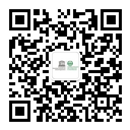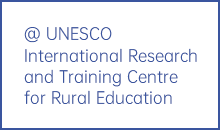Large scale outbreaks of pandemic disease, natural disaster, or serious air pollution took place in the global wide, affecting not only humans' health, but also the education sector. For instance, at the end of 2002, SARS affected several countries around the world. To contain the virus, face-to-face teaching was banned in several regions in China. Similarly in 2009, the outbreak of H1N1 Flu affected several people around the world, causing school closures in many countries and areas, such as Bulgaria, China, France, Italy, Japan, New Zealand, Serbia, SouthAfrica, Thailand, United Kingdom, and the United States (Cauchemez et al., 2014).
At the end of 2019, while the Coronavirus (COVID-19) is rapidly spreading worldwide, causing the death of over 3000 persons, several countries have initiated several strategies to contain this virus, including school closures. UNESCO stated that, as of 12 March, forty-six countries in five different continents have announced school closures to contain the spread of COVID-19. Specifically, twenty-six countries have completely closed schools nationwide, affecting the learning process of almost 376.9 million children and youth who would normally attend schools. A further twenty countries have partially closed schools (localized school closures) to prevent or contain the spread of COVID-19. Particularly, 500 million children and youth are still threatened with not attending their schools if these twenty countries also order nationwide school closures.
International organizations have paid particular attention to the issue of "Education Response in Crises and Emergencies". UNESCO stated in the Education 2030 Incheon Declaration and Framework for Action that countries should "provide alternative modes of learning and education for children and adolescents who are not in school at both the primary and secondary levels, and put in place equivalency and bridging programmes, recognized and accredited by the state, to ensure flexible learning in both formal and non-formal settings, including in emergency situations".
Specifically in China, to contain the COVID-19, the Chinese government has banned most-face-to-face activities, including teaching. The Chinese Ministry of Education has launched an initiative entitled "Disrupted Classes, Undisrupted Learning" to provide flexible online learning to hundreds of millions students from their homes. Inspired by the united solidarity and innovative experiences of millions of teachers and students, this handbook aims to define the term "flexible learning" with vivid examples and touching stories. It describes several implemented flexible online learning strategies during the COVID-19 outbreak. These strategies are presented based on six dimensions, namely (a) infrastructure, (b) learning tools, (c) learning resources, (d) teaching and learning methods, (e) services for teachers and students, and (f) cooperation between enterprise, government, and schools. Specifically, this handbook can help other educators, researchers and practitioners implement similar case studies in their context. Finally, this handbook shows, based on this practical experience, different collaborations between several sectors (governmental, telecommunication, enterprise, etc.) to provide effective and inclusive education in case of emergencies, such as the COVID-19.













